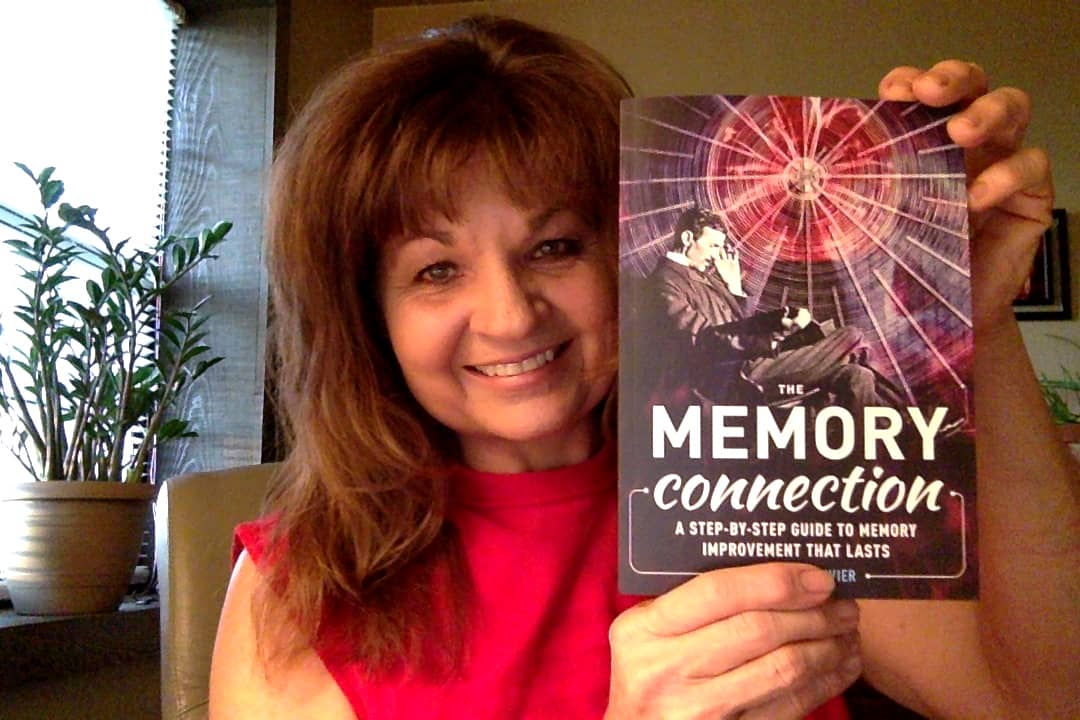 Want to develop an eidetic memory?
Want to develop an eidetic memory?
Not so fast.
Far too many people don’t even know what this term means, so here’s a proper definition.
Eidetic memory is an extremely rare and generally brief experience of being able to reproduce visual information and sometimes other details after a very short glance.
It’s not really “photographic memory” and it’s typically seen mostly in children.
Unfortunately, many people have understood this special kind of memory, leading to false beliefs that it involves perfect recall.
Some people even think you need to induce what psychologists used to call hyperthymesia. (These days, they call it Highly Superior Autobiographical Memory.)
Other people come to believe that they can develop photographic memory by listening to subliminal tapes.
That has never been proven true.
But you can improve your visual recall.
And you can do so without spending hours analyzing the definition of eidetic memory just to enjoy vivid recall following a short period of exposure to stimuli.
Even better:
Anyone can work to develop a better memory. You just need to understand what this term really means. And then put it aside. Train your memory instead.
On this page, you’ll learn how based on my fourteen years of experience teaching memory techniques and researching memory science.
What Is Eidetic Memory?
More On The True Meaning Of This Term
An eidetic memory is a memory which is very vivid and has great potential for recall.
This simple definition doesn’t mean that people with eidetic memory actually do remember everything, however.
That’s the common myth that hearsay and empty television shows suggest.
Eidetic memory simply means you can remember many things in vivid detail. It’s not photographic memory.
(It’s not the opposite of aphantasia either.)
You should also note that many scientists are skeptical that even such a thing exists. I am skeptical too, and as recently as 2016, scientist Brian Dunning noted two important points:
- The scientific evidence in support of eidetic memory is extremely limited.
- Any advantage that some people have with memory boils down to one degree of improvement.
In other others, what counts as “better” memory rarely warrants much praise.
Some famous people like Nikola Tesla are said to have had it, but this is difficult to prove. And it doesn’t really matter anyway, because he had so many other qualifications that explain his achievements.
Then there are stories like Solomon Shereshevsky. It’s not at all clear what happened to him, but it’s worth learning about his life because he apparently used some of his memory skills for practicing journalism.
At the end of the day, perfect memory isn’t worth going for in most cases, unless you’re a memory competitor. Rather, I suggest that you seek holistic memory skills, something I explain in my book, The Memory Connection.

Key point:
Memory doesn’t operate in a void. You need to train multiple aspects of your mental abilities to succeed in any area of life.
And the truth is this:
The people displaying the most impressive feats are every day individuals who have become mnemonists, or highly skilled memorizers who use mnemonics. These include people like Katie Kermode, John Graham, Tansel Ali and many more.
How to Get a Photographic Memory…Is It Actually Possible?
In a word, no.
As Dr. Barry Gordon explains in Scientific American, “photography is a very poor metaphor. And that’s just for starters.
NASA itself debunked the notion at the same time it took on “photoreading.” (Also a poor metaphor that strangely sets the bar far lower than the miracles of sight and memory deserve.)
Possibly as part of dissuading people from thinking such a thing is possible, NASA clearly defines “photographic memory” as something limited to the storage and retrieval of data from cameras and other image capture devices.
But there is power in developing metaphors for how you want to describe your memory. Just make sure it’s more powerful than this relatively weak technology. You can do far better than emulating a camera.
To improve your memory so that it remembers more visual information, here’s what I suggest:
A Powerful Visual Memory Exercise
If you really want to comprehensively improve your mind, try this memory-boosting brain exercise:
Imagine closing your eyes. Then imagine yourself imagining a painting.
I want you to not only imagine seeing the painting, but the brush, the canvas, and all the colors.
As you imagine this picture of yourself painting a picture, add the smells, the feeling of the brush in your hand and the sensation of the air in the room.
Kind of tricky, right?
But just ask yourself:
What is it that you see in your mind’s eye (or whatever you call your imagination)?
Do you actually need to see anything in order to experience a vivid impression?
Does that impression actually need to be vivid in order to be useful?
How about the other sensations? Isn’t that much more powerful than seeing on its own?
When it comes to learning memory techniques (which is this focus of this memory improvement website), the answer is that it doesn’t matter at all.
Forget Photographic Memory: Do This Instead
Here’s the obvious truth:
The whole idea of “photographic memory” is ludicrous.
After all, photographs turn yellow, fade, curl and eventually crumble into dust. You’re far better off pursing a metaphor for your mind like being the caretaker of a multi-sensory garden.
All of my memory training focuses on helping people do just that.
If you’re interested in this authentic progress towards remembering things better, let’s take our exercise from above and go further:
Image a recent conversation you’ve had.
Hear the voices of the people you were talking with. Really dig into your memory of how those voices sound.
Next, fill in all the details you can, ranging from exact words and phrases used, to the color of the person’s eyes.
Imagine the location and any other details.
Don’t judge your memory. Just observe how your memory works. Take note of how your imagination assists your memory.
Ask yourself: Where does my memory begin and where does my imagination end? (And vice versa?)
As you explore these “next level” memory training questions, go as deeply into your personal history as possible. This will help you exercise your autobiographical memory. Here are some more suggestions:
Next, try the same exercise with a piece of music. Run the music through your mind in as great of detail that is possible for you right now.
The Most Important Thing To Know About Eidetic Memory
Sorry to disappoint you, but at the risk of being repetitive, I have to spell it out again:
The exact definition of “eidetic memory” doesn’t matter.
Moreover, developing this kind of memory should not be turned into a goal.
The memory you have right now is beautiful. Even if you are already a world renowned memory expert, you can still train your memory and improve it.
The potential for recall based on your current state of memory is more important than thinking about why children are sometimes described as having eidetic memory.
Although their memories can be quite vivid, they are rarely more than short term when it comes to the kinds of knowledge that adults need to get into their short term memory.
So here’s the real issue with hoping and wishing and praying you could pass an eidetic memory test, develop photographic memory or any other woo-woo term people have put out there…
No One In Their Right Mind Wants A Photographic Memory!
What?
Did I really just say that?
Yes, and I can prove it to you. Keep reading.
For now, I want to help you strive for laser-targeted memory skills instead. Here’s how:
Let’s face it:
Without memory training, people who naturally cannot help but remember everything have a great deal of trouble focusing as a result.
This outcome happens because at every moment, their mind is flooded with unnecessary information.
This inability to forget is called hyperthymesia. It’s probably a genetic trait and seems linked to autism. People like Jill Price, a famous, but mislabeled eidetic memory example, may also have some OCD factors that explain their extraordinary (but also extraordinarily limited) autobiographical recall.
Most people don’t need that photographic memory. They’re not narcissists, after.
Instead, the goal is to train your memory to be powerful and focused. You want to be able to learn faster and remember more so you can help others more and lead a better life.
The Most Powerful Alternatives To Eidetic Memory Exercise
Here are some exercises and tips to get you on your way to a truly eidetic memory:
Practice Describing Things.
Most people are unable to describe things, even those they work with every day. What does the tree in your front yard look like? How about your street?
There are also many objects in your house that you pass by every day that you can learn about by examining and describing. Try describing aloud, in your head, and on paper and use the method that works best for you.
Look around you.
Now close your eyes.
What do your surroundings look like?
Describe them in as much detail as you can.
Your goal is to see everything in your mind’s eye that you can see while your eyes are open.
Use ALL of your senses.
Seriously:
Opening up your senses will allow you to be aware of more.
For example, you can smell the wonderful smells outside.
Feel the texture of things, both by literally reaching out to touch them and imagining your sense of touch.
Watch how the shading on the clouds can change and notice the interesting colors in people’s eyes.
Enjoy yourself.
Slow down and enjoy meals.
Do you really remember what breakfast tasted like?
If you don’t experience things in the present, it’s hard to remember experiencing them in the past.
Here’s The Good News About Eidetic Memory
You don’t need it.
That doesn’t mean you shouldn’t explore different teachers, or people into things like Paul Scheele’s “photoreading.” By all means, go for it, but “buyer beware.”
(After all, the very term he uses should raise alarm bells. And just wait until Scheele tells you about “Psi Pothesis”…)
In truth, you’re probably better off with Tony Buzan’s Mind Map Mastery combined with a solid Memory Palace Network instead.
These 5 Note Taking Techniques That Force You To Remember More will probably be more useful to you than trying to develop eidetic memory ever can be.
Even better:
Pushing your memory to grow with meaningful memory training doesn’t require work.
Quit the opposite!
Memory improvement can and should be 100% play. You just need to adopt the correct mental attitude and stop seeking magic bullets. There aren’t any.
So pay attention to each of the memory improvement points above because they come from legitimate memory experts I’ve learned from personally, including Tony Buzan, Phil Chambers, Nelson Dellis and more.
The more you focus your memory improvement efforts on scientifically sound memory exercises, the faster you will progress.
And this point can’t be emphasized enough:
It’s incredibly important to be healthy. Your brain is capable of astounding things when it is cared for correctly, and when you give it lots of practice. So if you’re ready to improve, it’s time to get started.
If you’re interested in doing all of the above while developing a Memory Palace system using the Magnetic Memory Method (the most expansive 21st Century update to the Method of Loci we have), then you are invited to join the Magnetic Memory Method Masterclass.
Further Reading
Wikipedia article on Eidetic Memory
Article on Lebron James, who is said to have an Eidetic memory



